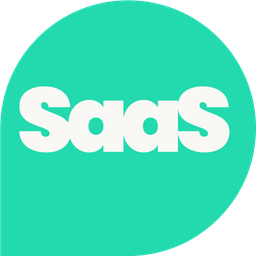In today’s increasingly competitive SaaS space, creating a successful financial model can be one of the toughest challenges. The industry landscape has evolved far beyond simply creating an impressive business model.
Today, it's about securing a winning strategy that sustains long-term growth despite the increasing market situation.
To thrive in the ever-changing dynamic environment, SaaS companies must focus on more than just product development. Although there are multiple avenues for successful growth in SaaS, one of the core foundations - yet often overlooked - happens to be cash flow management.
An effective cash flow management plays a critical role for companies to define purpose, direction, and continued success. A carefully planned financial roadmap is not simply a strategic convenience but a necessity for the SaaS models to survive.
This article will discuss the most important aspects of SaaS finance, the key financial metrics that require the most attention, and the pitfalls to avoid moving forward in 2025.
Understanding SaaS finance and its models
SaaS finance refers to the financial strategies and operations that underpin a SaaS-based company. Typically, SaaS businesses use subscription models with billing cycles that may be monthly, quarterly, or annual. These financial models form the backbone of a company’s operations and are vital for sustaining profitability.
But how is profitability maintained in SaaS? Two critical elements are involved: Financial Modeling and Key Performance Indicators (KPIs).
Financial modeling creates detailed financial structures, strategic plans, and forecast analytics that help businesses better understand financial outcomes. It may involve structuring a company’s finances strategically, using historical data, market trends, and growth projections.
On the other hand, KPIs provide clarity on operational efficiency, focusing on what matters most. They allow teams to monitor performance and identify areas that need attention.

For many companies, growth starts with customer acquisition, i.e., reaching the top of the funnel. However, without the right KPIs, they may struggle to maintain a straight growth trajectory.
KPIs help teams better visualize where the financial burn is happening, how to identify opportunities, and what future financial operations should look like.
A strong financial outlook includes;
- The income statement represents a company’s revenue and expenses, followed by a projection of how these may affect the company’s balance and budgets over time.
- A dedicated balance sheet and cash flow represent how money has flown in and out of the company, providing insights into liquidity and financial health.
- The statement of cash flow, or balance sheet, gives visibility into the company’s assets, liabilities, equity, and other financial commitments, such as subscriptions, patents, digital entitlements, and licenses.
Together, these financial documents help the company create a strong foundational framework that helps SaaS companies position themselves for the future, including workforce changes, churn rates, expansion costs, and customer retention costs.
Key questions for crafting a SaaS financial model
While financial models can vary depending on the business, there are some fundamental questions every SaaS company should ask to guide their strategy:
- What is the cost-benefit analysis for acquiring a new customer?
- What is the cost spent on maintaining a customer (this may also come in handy to see if the customer is an ideal customer or not)
- How do licensing and subscription models differ, and what would be the cost?
- What are the marginal benefits of obtaining a new subscription?
- What is the current value of your organization?
- What is the financial cost of maintaining the organization's culture, values, etc?
- What are the most apparent changes in your company that can financially benefit your business?
These questions may not always highlight financial sensitivity and give a quantifiable answer. Still, they offer businesses a fair understanding and clarity on how they can be affected in the long run. For instance, if your company focuses on product-led growth by doubling subscribers, how will this affect cash flow, employee workload, and customer support costs?
A critical metric for assessing long-term financial health is Discounted cash flow (DCF) valuation. This metric accounts for the time value of money, future cash flows, and the predictability of your business model.
Important SaaS metrics to monitor
You must monitor the right financial metrics. To keep your business on track. These metrics should be aligned with your growth goals and provide actionable insights.
Here are the most important ones to consider.
- Monthly Active Users (MAU): Track the number of people subscribing to your SaaS product and watch for growth or declines.
- Average ROI per user: Understanding the revenue generated by each customer helps identify profitable segments and areas of growth.
- Churn rates: Almost all SaaS models experience specific churn rates. A high churn rate signals a problem with the product and must be reduced for long-term success.
- Customer Acquisition Cost (CAC): Getting good customers does not come for free. Track how much you spend to acquire each customer and ensure it is attainable.
- Customer Lifetime Value (LTV): You should always target a customer who offers you a lifetime value, which is best for finding more growth opportunities.
- LTV/CAC Ratio: this key ratio shows the relationship between the cost of acquiring a customer and the value they bring over time. Finding the correct ratio between LTV and CAC is a success metric for calculating ROIs.
- Market size - define your ideal customer profile and understand your target market size.
- Burn Rate - keeps the company in check of business scaling efficiently during challenging market conditions.
- Net Profit Margin - your bottom line — the ultimate goal of hitting profitability
- Monthly recurring Revenue (MRR) - keeps the predictable growth and cash flow of revenue.

Financial growth strategies to avoid pitfalls in 2025
As we move into 2025, the competition in the SaaS space only becomes intense. There are over 17,000 SaaS companies in the U.S. alone and a global customer base of 59 billion, generating $401.6 billion in revenue. In such a crowded market, even small missteps can set your business back significantly. Besides, with changing trends and automation, the demand for ‘excellent SaaS’ will require more than just a great product.
Here are some strategies that can help you stay ahead of the curve:
Simplifying your pricing and workflows
Offering a wide range of pricing plans may seem like a good idea, but it can only lead to customer confusion and a complicated sales process. Today’s customers are well aware of what they want and are willing to pay for value without having to wade through a maze of pricing tiers.
Solution? Consider creating a flexible, easy-to-use, customer-centric strategy that aligns with your targeted ICP without working through several purposeless steps. Make it simple and easy to understand, reducing friction and ensuring more promising conversions.
Maintain healthy cashflow
Good, steady cash flows are the backbone of SaaS models. While fierce competition is fierce, many companies are tempted by one-tie sales or short-term revenue boosts, which could harm long-term SaaS financial health. Instead, focus on maintaining strategies and creating channels that maintain steady cash flow through recurring revenue.
Create lasting value
Delivering value is the key to customer retention in SaaS. Focus on building features that solve real customer problems.
Best practices to maintain;
- Focus on necessary customer-centric benefits
- Translate your features into clear, understandable benefits
- Keep your communication user-friendly and solution-oriented
- Share real-world use cases and success stories
- Be open to feedback and be flexible in adapting to customer needs
Invest in marketing
If you wish to outrun your competitors in 2025, you MUST invest in good marketing campaigns. Creating content that draws your audiences to your brand value is the key to winning good bottom-of-the-funnel clients.
Marketing is an excellent tool for gauging your audience's emotions and instilling your business as memorable and shareworthy.
Example: Remember Zoom's famous virtual background challenge? It was a creative and low-cost way to engage users while prompting the product.
Take control of your SaaS business in 2025
As new tools and technologies emerge, it's easy to get overwhelmed by the sheer volume of advice and financial metrics available. This means that people will come from left and right to tell you what truly matters in Saas, and that can look like intimidating numbers and more financial restraints.
But here is my takeaway: amidst all the noise, it's crucial to return to basics. Focus on the essentials, track the right metrics, structure your financial model, scale your business, and concentrate on what truly matters—continuous practical solutions for your customers.
By doing so, you will be well-positioned to scale your business, reduce churn, and increase your monthly recurring revenue (MRR), paving the way for continued success in 2025 and beyond.
Access a variety of templates and frameworks, including pricing strategies, churn surveys, and onboarding checklists.
These resources are thoroughly vetted and updated monthly by professionals from major organizations like Facebook and Salesforce, designed to aid SaaS companies in optimizing their operations and growth strategies.
Have a look below.







